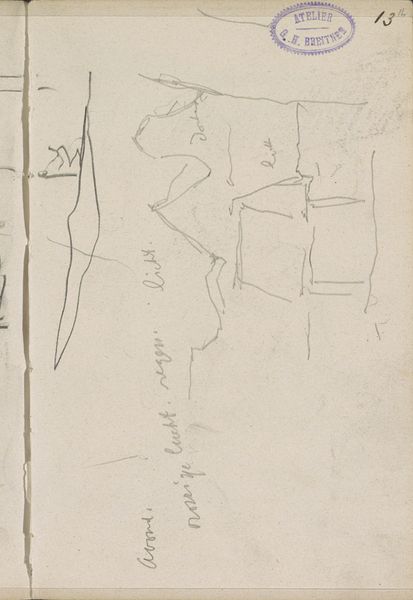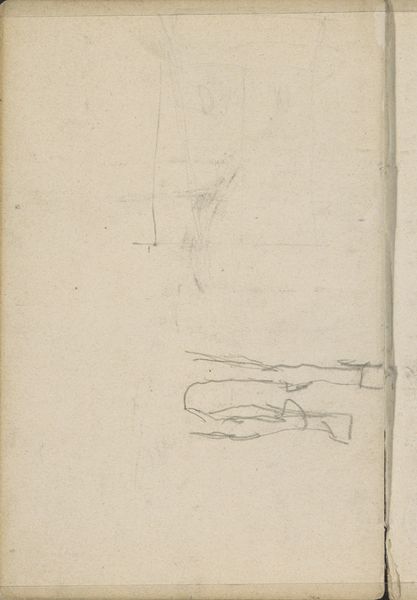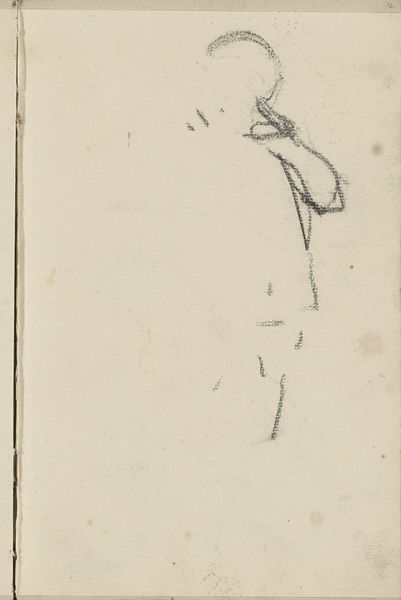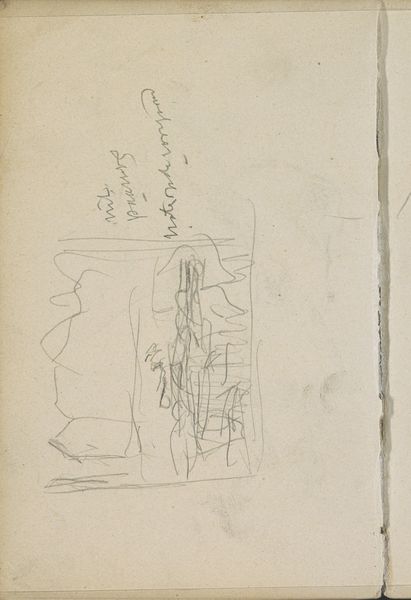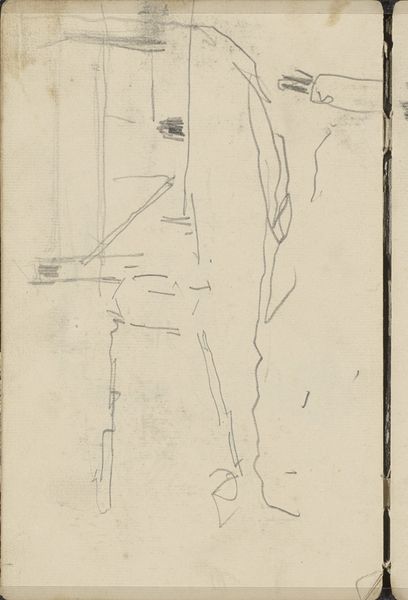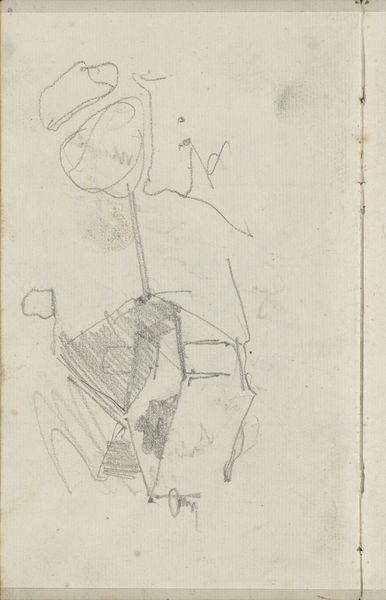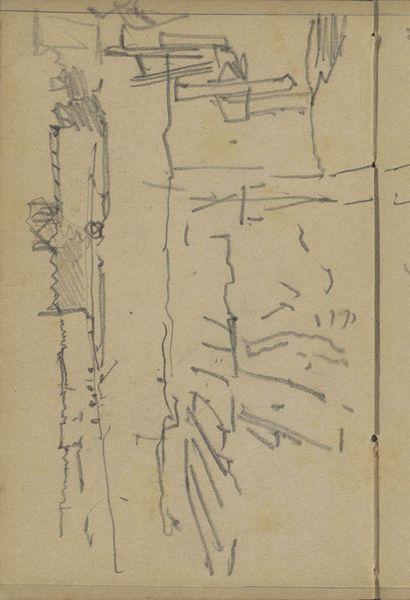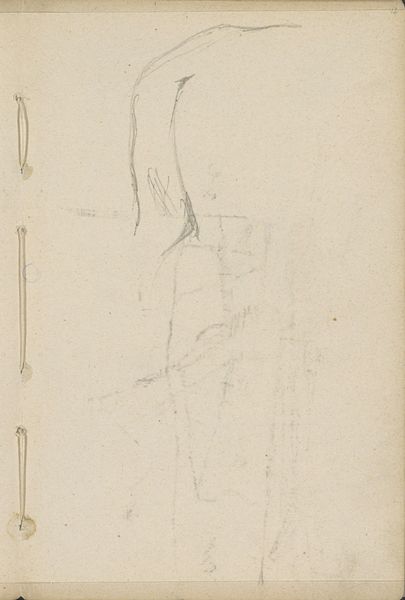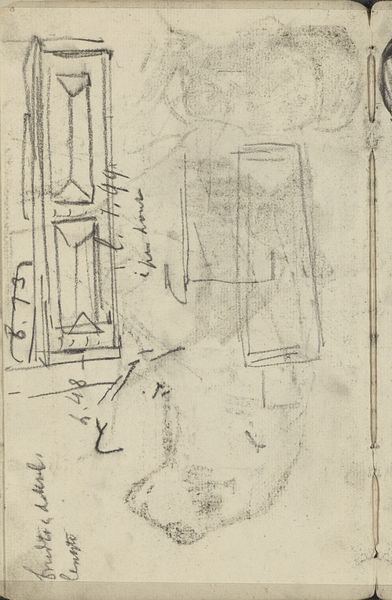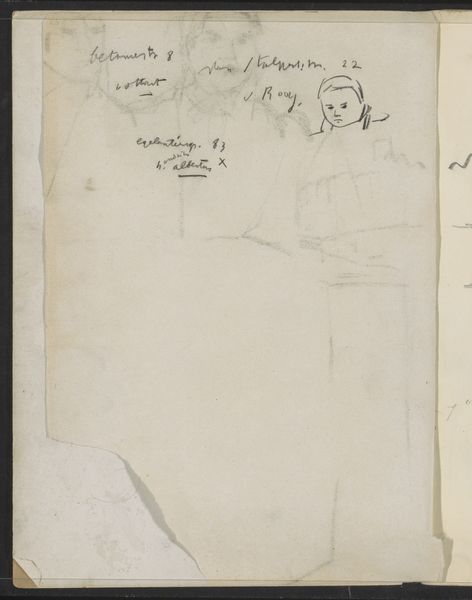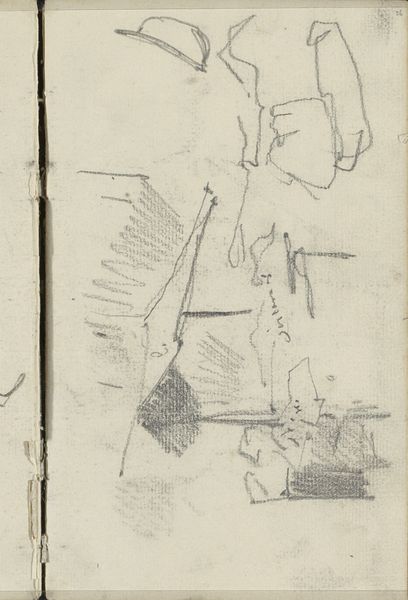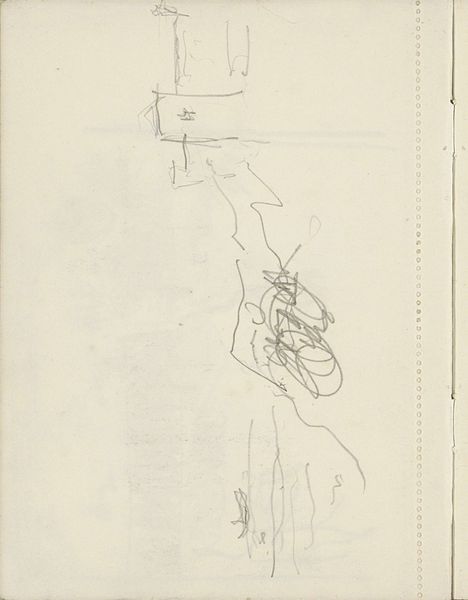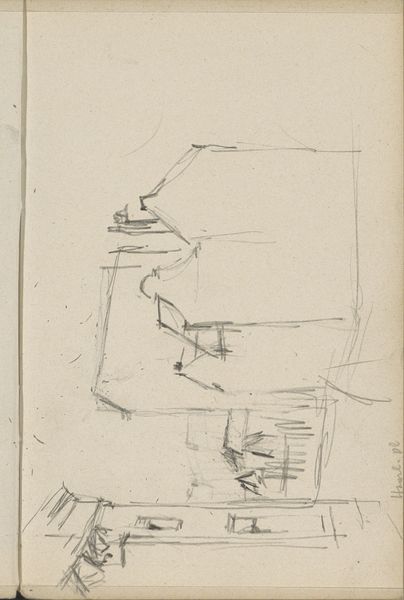
Brug op de hoek van de Brouwersgracht en de Prinsengracht te Amsterdam c. 1902
0:00
0:00
georgehendrikbreitner
Rijksmuseum
Copyright: Rijks Museum: Open Domain
Editor: Here we have George Hendrik Breitner's "Brug op de hoek van de Brouwersgracht en de Prinsengracht te Amsterdam," a pencil drawing from around 1902. It’s incredibly sparse. Just a few lines capture the architecture. What do you see in this piece? Curator: I see Breitner capturing the socio-economic pulse of Amsterdam through its urban infrastructure. It's not just a bridge, it's a connector, facilitating trade and movement but also potentially reinforcing social divisions. Consider the contrast: the starkness of the lines perhaps hinting at the rapid industrialization and its impact on the working class juxtaposed against the implied wealth represented by the canal houses. How does the sketch’s incompleteness speak to this? Editor: That's fascinating! I hadn't thought about the social context. The incompleteness makes it feel almost…urgent? Like a fleeting glimpse into a changing world. Curator: Precisely. Breitner, known for documenting the everyday, often focused on working-class life. We must ask ourselves whose stories are centered? How do the perspectives of marginalized communities become part of our understanding of the landscape? This image is more than picturesque, it is the city’s beating heart and the social inequities pulsing throughout. Editor: So, by focusing on the bridge, he's actually highlighting the unseen stories, the human connections and disconnections happening within this space? Curator: Exactly! It is critical to decode who can cross bridges, figuratively and literally, and what obstacles or prejudices could limit them, considering socio-economic background, gender, and ethnicity. The under-representation or erasure of minority voices also invites analysis through a critical postcolonial lens. Editor: Wow, I’ll definitely look at Breitner’s work differently now. Thank you! Curator: It's essential to remember art doesn't exist in a vacuum. It's intertwined with complex social and historical currents that influence our perspectives.
Comments
No comments
Be the first to comment and join the conversation on the ultimate creative platform.
